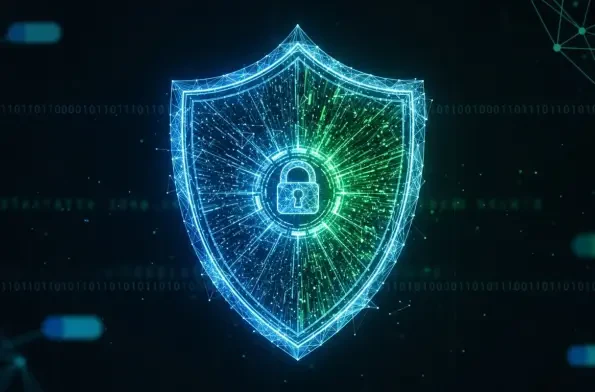The digital landscape has become a battleground where cyber threats loom larger than ever, with organizations facing an average of millions of attacks each month. Imagine a major financial institution fending off 100 million cyber assaults in just 30 days, a staggering reality that underscores the relentless pace of digital crime. This guide aims to equip businesses with actionable strategies to build a resilient defense against these escalating dangers by prioritizing ongoing training. It offers a comprehensive roadmap to transform employees into a powerful human firewall, ensuring that vulnerabilities are addressed before they are exploited.
The purpose of this guide is to highlight the critical need for continuous education in cybersecurity, far beyond basic technological protections, especially in an era where digital assaults have surpassed physical crimes in both scale and sophistication. Organizations must adapt by fostering a proactive security culture. This resource provides detailed steps to assess risks, implement dynamic training, and embed a mindset of vigilance across all levels of an organization.
Understanding the importance of this approach cannot be overstated, as cyber threats now impact every sector, from retail to government, and the financial toll alone is staggering, with ransoms paid globally reaching hundreds of millions annually. By following this guide, businesses can mitigate risks, safeguard sensitive data, and stay ahead of cybercriminals who constantly evolve their tactics.
The Urgency of Evolving Cybersecurity in a Digital Era
In today’s interconnected world, the significance of robust cybersecurity measures has never been more apparent, as cyber threats have grown exponentially, targeting not just financial institutions but also luxury brands, retail chains, and public sector entities. This pervasive danger demands more than just firewalls or antivirus software; it requires a fundamental shift in how organizations prepare for and respond to digital risks.
The scale of modern cyber-attacks is a wake-up call for businesses everywhere, highlighting the urgent need for robust defenses. Unlike traditional crimes confined by geography, digital assaults know no borders, striking at any time with devastating consequences. From data breaches to ransomware, the potential for financial loss, reputational damage, and legal penalties looms large, pushing the need for advanced strategies to the forefront.
Ongoing training emerges as a cornerstone of a strong defense, equipping employees to recognize and counter threats effectively. This guide delves into why basic protections fall short and outlines key approaches, such as continuous education and cultural transformation, to build resilience. By prioritizing these elements, organizations can better navigate the complexities of the digital era.
From Physical Heists to Digital Assaults: The Evolution of Crime
Historically, crime often conjured images of bank robbers tunneling into vaults or speeding away in getaway cars, a picture of daring physical heists that were limited by location and required significant planning. Today, however, the criminal landscape has shifted dramatically to the digital realm, where attacks are executed remotely with just a few clicks, targeting vulnerabilities across the globe.
This evolution is evident in the sheer volume of cyber-attacks faced by organizations, with some financial institutions enduring millions of attempts each month. Industries as varied as retail, luxury goods, and government agencies are not spared, facing threats like phishing, ransomware, and data theft. The borderless nature of these assaults means that no entity, regardless of size or sector, is immune to the risks.
The implications of this shift are profound, demanding a reevaluation of security approaches. Unlike physical crimes, digital threats exploit interconnected systems, often leaving little trace until the damage is done. This necessitates a proactive stance, where training and awareness become as critical as technological safeguards in combating the sophisticated tactics of modern cybercriminals.
Building a Resilient Defense Through Ongoing Training
Creating a robust defense against cyber threats requires a multi-faceted approach, with ongoing training at its core. Organizations must move beyond one-time workshops or static policies, focusing instead on continuous education that adapts to emerging risks. This section outlines specific, actionable steps to establish a proactive cybersecurity framework that empowers every employee.
By embedding training into the fabric of daily operations, businesses can address the human element often exploited by attackers, ensuring a more secure environment. Employees, when properly educated, act as the first line of defense, identifying suspicious activities before they escalate into major issues. The following steps provide a clear path to strengthen security through persistent learning and cultural shifts.
Leadership plays a pivotal role in ensuring these efforts are sustained over time, and with commitment from the top, training initiatives gain the necessary momentum to effect lasting change. The strategies detailed below aim to transform an organization’s mindset, making cybersecurity a shared responsibility across all departments.
Step 1: Assessing Current Vulnerabilities and Training Gaps
The journey to a stronger cybersecurity posture begins with a thorough evaluation of existing weaknesses. Organizations must identify areas where systems or personnel are most at risk, focusing on both technological and human factors. This initial step lays the groundwork for targeted improvements that address specific needs.
Conducting a comprehensive audit reveals gaps in employee awareness and policy enforcement, which are critical to organizational security. Many breaches occur due to simple errors, such as clicking on malicious links, highlighting the need for a baseline understanding of current capabilities. This assessment ensures that subsequent training efforts are relevant and impactful.
Beyond technology, understanding the readiness of staff to handle digital threats is essential, as it plays a critical role in safeguarding an organization. A structured approach to identifying these vulnerabilities helps prioritize resources effectively. The following subsections delve into practical methods for mapping risks and evaluating employee preparedness.
Mapping Digital Touchpoints for Risk Exposure
Every digital interaction within an organization represents a potential entry point for cybercriminals, making it essential to audit these touchpoints thoroughly. From email systems to cloud platforms, identifying where threats are most likely to strike is crucial for security. This process involves cataloging all points of data exchange to understand exposure levels.
Such an audit should encompass internal networks as well as third-party integrations that could be exploited. By visualizing the flow of information, businesses can identify weak links, such as unsecured access points or outdated software. This detailed mapping provides a clear picture of the attack surface that needs protection.
Prioritizing high-risk areas during this exercise allows for efficient allocation of security measures, ensuring that resources are used effectively to protect the most vulnerable points. For instance, customer-facing portals often require heightened scrutiny due to their visibility to external threats. A systematic review ensures that no critical component is overlooked in the quest for comprehensive defense.
Evaluating Employee Readiness for Cyber Challenges
Testing the knowledge and instincts of staff regarding cyber threats is a vital part of vulnerability assessment, and simple methods, like sending mock phishing emails, can reveal how many employees might fall prey to deceptive tactics. This evaluation highlights immediate areas for improvement in awareness.
Surveys and quizzes also serve as effective tools to gauge understanding of basic security protocols. Questions about password management or recognizing suspicious activity provide insight into training needs. Tailoring educational content based on these results ensures that it addresses real-world shortcomings.
Regularly revisiting these assessments keeps the organization attuned to evolving risks, ensuring that as new threats emerge, the benchmarks for employee readiness are updated accordingly. This ongoing process helps maintain a workforce capable of navigating the dynamic landscape of digital dangers.
Step 2: Implementing Regular and Dynamic Training Programs
Once vulnerabilities are identified, the next step involves establishing a continuous training regimen that evolves with cyber threats. Static, one-off sessions are insufficient in a landscape where attackers constantly refine their methods, so dynamic programs ensure that employees remain vigilant and informed.
Engagement is key to the success of these initiatives, as uninterested participants are less likely to retain critical information, and incorporating interactive elements can make a big difference. Adding real-world scenarios can significantly boost effectiveness and ensure that the training resonates with participants. The subsections below explore practical ways to design and update training for maximum impact.
Consistency in delivering education also reinforces the importance of cybersecurity within the organization. Scheduling regular sessions, whether monthly or quarterly, keeps the topic at the forefront of employees’ minds. This sustained effort builds a foundation of knowledge that adapts to new challenges.
Using Simulations to Mimic Real-World Threats
Simulations offer a hands-on approach to preparing employees for actual cyber incidents. By replicating scenarios like phishing attempts or malware infections, these exercises test reactions in a controlled environment. Participants learn to spot red flags and respond appropriately without real-world consequences.
These mock attacks should vary in complexity to challenge different skill levels within the workforce. For example, a seemingly legitimate email requesting urgent action can reveal how many fall for subtle cues. Feedback after each simulation helps refine skills and correct mistakes in a supportive setting.
Integrating these drills into routine training schedules ensures that preparedness becomes second nature. Over time, employees develop instincts that help thwart genuine threats. This practical method bridges the gap between theoretical knowledge and actionable responses.
Updating Content to Reflect Emerging Risks
Cybercriminals frequently adapt their tactics, making it imperative to revise training materials accordingly. Content must address the latest trends, such as new ransomware variants or social engineering ploys, to ensure effectiveness. Staying current prevents education from becoming outdated and irrelevant.
Collaboration with cybersecurity experts can provide insights into emerging threats for inclusion in curricula, ensuring that training remains relevant. Regular updates, informed by industry reports and incident analyses, keep the training aligned with the evolving digital landscape. This proactive stance minimizes blind spots in employee knowledge.
Communicating these updates effectively ensures that all staff are aware of new risks. Short, focused modules or alerts about recent attack methods can supplement broader training efforts. This continuous refresh keeps the organization one step ahead of potential breaches.
Step 3: Fostering a Cybersecurity Culture with Leadership Support
Beyond individual training, cultivating a culture of cybersecurity requires buy-in from every level of an organization. Leadership must champion these efforts, demonstrating that security is a priority for all. This cultural shift transforms attitudes, embedding vigilance into daily practices.
Clear communication from executives about the importance of digital safety sets the tone for the entire workforce. When leaders actively participate in training and adhere to policies, it signals a unified commitment. This top-down approach fosters an environment where security is everyone’s responsibility.
Policies and accountability mechanisms further solidify this mindset, ensuring that cybersecurity is not an afterthought. The following subsections outline how to establish guidelines and encourage shared responsibility. Together, these elements create a cohesive defense strategy rooted in collective effort.
Setting Clear Policies for Digital Responsibility
Accessible and well-defined policies empower employees to act as guardians of digital assets. Guidelines should cover acceptable use of systems, password protocols, and reporting suspicious activity. Clarity in these rules eliminates ambiguity about expected behaviors.
These policies must be easily understood and readily available to all staff members. Regular reminders through internal communications or visual aids reinforce adherence. When employees know the standards, they are better equipped to uphold them in their daily tasks.
Periodic reviews of these directives ensure they remain relevant to current threats, and adjustments based on incident feedback or new regulations keep the framework robust. A strong policy foundation supports a culture where digital responsibility is ingrained.
Encouraging Accountability Across All Levels
Accountability ensures that cybersecurity remains a priority, regardless of role or seniority. Leadership must model best practices, such as using secure access methods and participating in training, and this visible commitment inspires others to follow suit.
Mechanisms like performance metrics tied to security adherence can reinforce individual responsibility. Recognizing employees who exemplify good practices also promotes a positive attitude toward compliance. Such initiatives create a sense of ownership over the organization’s digital safety.
Regular discussions about cybersecurity in team meetings keep the topic alive across departments. Encouraging open dialogue about challenges or near-misses fosters a collaborative approach to problem-solving. This shared accountability strengthens the overall defense posture.
Step 4: Integrating Zero Trust as a Core Principle
Adopting a Zero Trust model enhances security by assuming no user or device is inherently trustworthy. Every access request, whether from within or outside the organization, must be verified. This principle minimizes the risk of unauthorized entry into critical systems.
Implementing Zero Trust requires a shift in how access is managed, focusing on rigorous authentication at every step. While this approach may seem stringent, it significantly reduces the attack surface. The subsections below detail how to apply this model effectively without disrupting operations.
Balancing security with usability is crucial to ensure that Zero Trust does not hinder productivity. Thoughtful design of verification processes can maintain efficiency while safeguarding assets. This strategic integration fortifies defenses in an era of persistent digital threats.
Strengthening Access Controls for Maximum Protection
Robust access controls form the backbone of a Zero Trust architecture. Multi-factor authentication, strict password policies, and role-based permissions ensure that only authorized individuals gain entry, creating multiple barriers against potential intruders.
Continuous monitoring of access attempts helps detect anomalies that could indicate a breach, and automated systems can flag unusual activity, such as logins from unfamiliar locations, for immediate review. This proactive oversight limits damage from compromised credentials.
Regular audits of access rights prevent outdated permissions from becoming vulnerabilities, and removing unnecessary privileges reduces the risk of insider threats or exploited accounts. A disciplined approach to control management is essential for sustained protection.
Balancing Security with Operational Efficiency
While stringent security is vital, it must not impede day-to-day operations. Zero Trust implementations should streamline verification without creating bottlenecks. For instance, single sign-on solutions can simplify access while maintaining high security standards.
User training on these systems ensures smooth adoption and minimizes frustration, while clear instructions on authentication processes help employees navigate security protocols efficiently. Support mechanisms, such as help desks, address any issues that arise during implementation.
Evaluating the impact of Zero Trust on workflow allows for ongoing adjustments, and feedback from staff can highlight areas where security measures disrupt productivity, enabling refinements. This balance ensures that protection enhances rather than hinders organizational goals.
Key Takeaways for Building a Human Firewall
Summarizing the essential strategies for combating cyber threats provides a quick reference for organizations aiming to strengthen their defenses. These interconnected steps form a comprehensive approach to cybersecurity:
- Assess vulnerabilities and training needs to establish a clear starting point for improvements.
- Implement ongoing, dynamic training programs that include real-world simulations for practical learning.
- Foster a cybersecurity culture through strong leadership support and clear, accessible policies.
- Adopt a Zero Trust approach to secure all access points, minimizing risks of unauthorized entry.
These points collectively emphasize the importance of human preparedness alongside technological safeguards. By integrating these strategies, businesses create a robust human firewall capable of withstanding sophisticated digital assaults. Each element reinforces the others, ensuring a holistic defense mechanism.
The Broader Impact and Future of Cybersecurity Training
Prioritizing continuous training aligns with global trends in digital transformation, where cybercrime continues to escalate at an alarming rate. Ransoms paid worldwide have reached staggering figures, with hundreds of millions reported in a single year, reflecting the high stakes involved. This reality underscores the need for sustained education across all industries to counter these pervasive threats.
Government frameworks, such as specific national codes of practice for cyber governance, provide valuable guidance for organizations seeking to enhance their security posture. These standards advocate for collective responsibility and proactive measures, reinforcing the importance of training initiatives. Their adoption signals a broader shift toward recognizing cybersecurity as a universal priority.
Looking ahead, the ongoing “arms race” between defenders and cybercriminals presents persistent challenges. As attackers leverage emerging technologies, organizations must anticipate new risks through relentless education and adaptation. Staying informed and agile remains critical to safeguarding digital assets in this ever-changing environment.
Take Action Now to Safeguard Your Digital Future
Reflecting on the journey through this guide, it has become evident that combining technological defenses with a well-trained workforce is paramount in combating cyber threats. Each step, from assessing vulnerabilities to integrating Zero Trust principles, has contributed to a stronger, more resilient security posture. The process highlighted how human awareness, supported by continuous education, plays a pivotal role in preventing breaches.
Moving forward, organizations were encouraged to start small with training initiatives, perhaps focusing on a single department before scaling up across the enterprise. Exploring additional resources, such as industry reports or expert consultations, offered valuable insights for refining strategies. These next steps ensured that efforts remained dynamic and responsive to new challenges.
Ultimately, the commitment to a proactive cybersecurity culture proved to be a game-changer. By investing in ongoing training, businesses positioned themselves to not only react to threats but to anticipate and neutralize them effectively. This forward-thinking approach laid the foundation for enduring resilience in an increasingly digital world.













